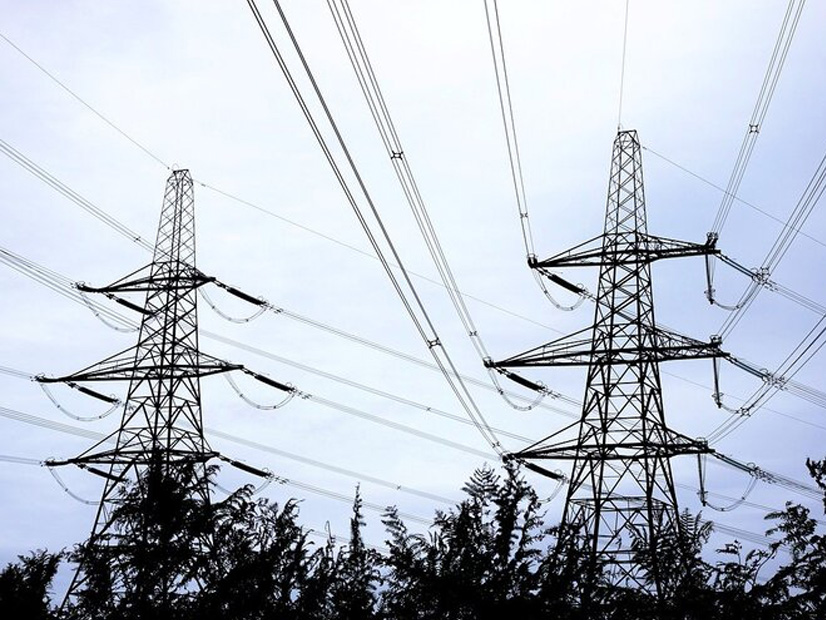Former FERC Chair Jon Wellinghoff last week said that four elements must be in place for the Biden administration to reach its stated goal of decarbonizing the electric grid by 2035.
The list includes more RTOs (including in the Southeast and West), integration of transmission planning with the interconnection queue, national transmission planning — and an entity to oversee that planning.
Speaking at the annual meeting of the Energy Bar Association’s Northeast Chapter, Wellinghoff joined state officials from Connecticut, Massachusetts, New Jersey and New York to discuss present and future transmission planning needs to reach a carbon-free electric grid.
Abe Silverman, general counsel for the New Jersey Board of Public Utilities, said that “we need to take transmission planning seriously like we intend to meet our clean energy targets.”
“New Jersey is just one state,” Silverman said. “We’re relatively small, we have very robust clean energy ambitions, but we shouldn’t have to be the ones spearheading what really is a national priority.”
Katie Dykes, commissioner of Connecticut’s Department of Energy and Environmental Protection, said that transmission is an essential and urgent topic. To reach decarbonization goals, she said it is vital to evaluate transmission as a resource to ensure the best use of existing assets while making needed transmission upgrades for offshore and onshore wind located far from load centers in New England. Dykes added that the grid’s topology requires reconfiguration to achieve full integration of distributed and behind-the-meter energy resources.
Judy Chang, undersecretary of energy in the Massachusetts Executive Office of Energy and Environmental Affairs, said there has been “a lot” of transmission investment in New England, “yet we don’t have a system that can absorb and integrate the clean energy resources that we need going forward.” Chang said the Biden administration’s goal of 30 GW of offshore wind means that “we can’t afford to develop this grid onshore and offshore in a piecemeal way.”
Energy for Environmental Justice
With the transition to cleaner resources, environmental justice has become an increasingly important subject in the energy industry. Crystal Pruitt, deputy director of the Office of Clean Energy Equity for the New Jersey Board of Public Utilities, created her office from scratch in the summer of 2020.
“I have a large task — so does my staff — integrating equity issues into energy issues because it’s not something that’s normally thought of hand-in-hand,” Pruitt said.
Pruitt said that in the process of discussing the policy implications of New Jersey’s 100% clean energy by 2050 target set by the Murphy administration, it became apparent the state could not ignore certain energy equity and environmental justice components.
“If any plans to have 100% clean energy were to be successful, discussions could not overlook the fact that there are communities, specifically Black and Brown communities, that have not been able to participate in the same clean energy programs or energy efficiency programs as their white neighbors,” Pruitt said.
Pruitt said equity is “not necessarily parity,” but about engaging communities historically kept out of the conversation, including people of color, low-income earners and non-English speakers.
“These people have not been left behind by accident,” Pruitt said.
Charles Lee, senior policy adviser for environmental justice at the Environmental Protection Agency, said he has been working on environmental justice issues since the 1980s, so “these are not new issues” and action is “long overdue.”
“We need to address the kind of systemic barriers to achieving truly healthy and sustainable communities,” Lee said.
Clements’ Keynote
In an opening keynote speech, FERC Commissioner Allison Clements referenced a Princeton University study that said reaching net-zero emissions by 2050 will require high-voltage transmission capacity to expand 60% by 2030 and triple through 2050 to connect wind and solar facilities with demand. The total capital investment necessary, according to the study, is $360 billion through 2030 and $2.4 trillion by midcentury.
Clements concedes that transmission upgrades are “wildly expensive,” but that FERC should not “stick our heads in the sand.”
“There’s going to be a sea of change in the amount of transmission that is going to be coming through, and we have to figure out how to best protect customers,” Clements said. “That requires a forward-looking approach to planning and review.”
Clements said that FERC Chair Richard Glick supports having states seated at the transmission planning table but added that “massive interregional transmission lines” require a whole-of-government approach, not just the commission’s efforts to “improve, reform and encourage” the planning process and cooperation. For example, while Clements thinks OSW development in Massachusetts and New York is “exciting,” she worries “a little bit” about the speed of interconnection.
“We will reach a point at which there’s a lot of investment required. We’ll get over some number of megawatts where we’ll run out of headroom on the onshore side, and we’ll have to figure how to support continuing [OSW] development,” Clements said.



